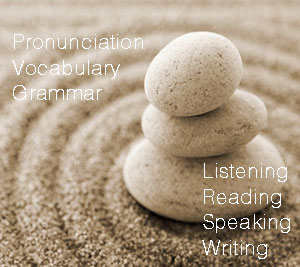 Most students feel at a loss when they first see IELTS Academic Writing Task 1. A diagram, a scheme or a table presents quite a challenge if a person doesn’t work as a financial analyst or a journalist. However, some training usually boosts learners’ confidence and allows them to acquire necessary analytical skills.
Most students feel at a loss when they first see IELTS Academic Writing Task 1. A diagram, a scheme or a table presents quite a challenge if a person doesn’t work as a financial analyst or a journalist. However, some training usually boosts learners’ confidence and allows them to acquire necessary analytical skills.
IELTS Academic Part 1 aims to test language skills of prospective students, hence its format. Students are generally expected to analyse data, write essays in English and arrange their ideas logically. Most universities require 6.5 band just to ensure that a student will understand lectures and cope with tasks.
One good piece of advice it to try IELTS-online course. In its Academic module you will learn how to understand different types of diagrams, graphs and tables, how to select important information, how to write an organised report and how to describe a process.
In addition, here are some strategies to prepare for IELTS Academic Writing.
1. Learn to plan
Planning is essential. Since time is extremely limited (20 minutes to write your analysis), it’s advisable to use the first three minutes to jot down a short plan. Basically, planning has 3 steps: analyse the figure, identify and group the main trends, write a few notes.
There is no need to plan your introduction, but it is vital to plan your overview and body. The overview should describe the main trends, whilst the body should provide more details about the data and not repeat the overview.
As you plan the body, try to divide it into 2-3 paragraphs. Try to see the similarities and differences between the numbers because your task is to compare and contrast.
2. Learn vocabulary
You will definitely need clusters and collocations that are used in analytics. You can get them from various sources. First, have a look at my collection of IELTS Academic Part 1 lexis. Second, you can purchase a couple of IELTS Vocabulary textbooks. Third, I would highly recommend you to read and analyse at least ten good samples of IELTS Academic Part 1. You can get some of them at IELTS Academic and Simon’s blog. In addition, you can find various reports about macroeconomic indicators and compile your own file of useful vocabulary.
Afterwards, you can try to write your analysis. At first, you can glance occasionally at your notes and use nice collocations. This technique will activate them efficiently in your memory. Later, you can endeavour writing without any support materials.
3. Write a strong overview
The purpose of any overview is to show the main trends. In case you analyse a table, a graph or a diagram, you can position it just after the introduction (exam advice by Andrew Thomas, IELTS Principal Examiner). If you analyse a process, you can place it in the end, as a separate paragraph.
You can indicate that it is an overview using “Overall,” or “It can be clearly seen“. The best overviews give the whole picture, e.g., “It can be clearly seen that the train was by far the most popular means of transportation for travellers over the whole period. In addition, whilst the number of commuters who used the car increased slightly, the number of bus users fell significantly.”
You shouldn’t show any figures or details in the overview.
4. Be sure to analyse all the main features
My students sometimes ask if they should mention all the numbers. The answer is no, however, you need to show all the groups. For example, you have a table with 5 lines and 5 columns. You should not write all the 25 figures, but you need to analyse all the 5 groups of data.
As you give details, it is important to group them by similar trends. Then support your data with figures. One technique (again by Andrew Thomas) was very helpful — you can use the brackets to show the numbers. E.g.: Another prominent feature of the data is that relatively low numbers of students in both age groups (less than 10% of 16- to18-year-olds and less than 7% of 19- to 21-year-olds) plan to study.
You will also need to make comparisons. Whenever I look at a graph or a chart, I try to see the reverse trends, the largest and the smallest percentage, sharp increases and decreases.
5. Be concise and specific
For IELTS Academic Task 1, you will need to write at least 150 words. At the same time, you can’t exceed word limit significantly for the following reasons: 1) the format presupposes the analysis of the main features, therefore, it can’t be too long; 2) the tasks are composed in such a way that it is virtually impossible to write more than 170 words without repetitions or unnecessary information.
Being concise means that you use strong verbs (rose, fell, plummeted, soared, plateaued, fluctuated), group similar trends and avoid repetitions.
Being specific means that you should not add any extra details. Neither should you try to suggest any reasons or give your opinion. Just analyse the data and give the facts in a neutral unbiased way.
6. Use cohesive devices
Train to use words like “Whereas“, “Whilst“, “In contrast”, “Similarly”. You may also venture to use more sophisticated referencing devices, like “this, the former, the latter, which, those“, etc.
Again, you can write your first analyses using your vocabulary notes, textbooks, samples or Academic IELTS file. Then try again without any support.
7. Use a variety of lexis and grammar structures
First of all, learn how to paraphrase the task in your introduction. You can use synonyms:
information=data
graph=line graph
diagram= figure
chart=bar chart (with bars) or pie chart (a round with sections)
proportion=the percentage of
shows= illustrates
Next, try not to repeat the same words. E.g., you can use various words to show the tendencies of increase/ decrease (went up, rose, augmented, soared or fell, went down, plummeted). Or, you can use other parts of speech (expenditure, spending, spent).
Also, try to use various constructions: Active and Passive Voice, complex sentences, “not only… but also”, “neither… nor”.
Finally, as soon as you feel progress in your writing training, I would recommend you to find a professional English teacher to check your writing. Best of all, choose an IELTS assessor. You second best choice would be an IELTS trainer, well familiar with the exam format. Such a person will help you to identify your weak spots and improve your writing.
You can also read the article about Writing Band descriptors.
 Русский
Русский English
English



